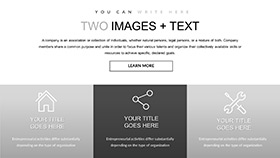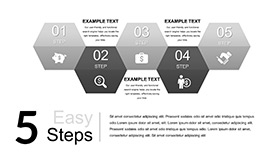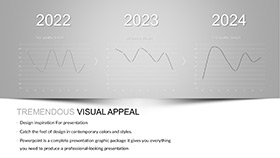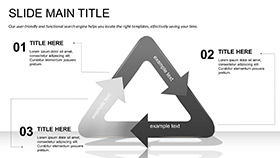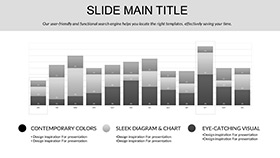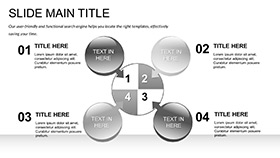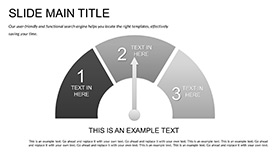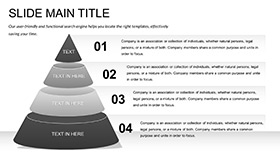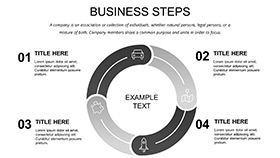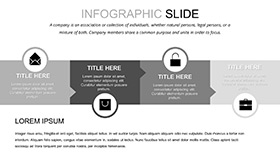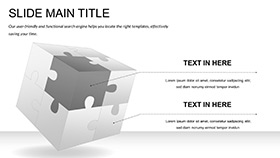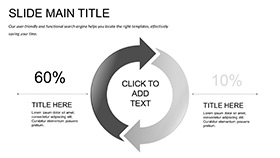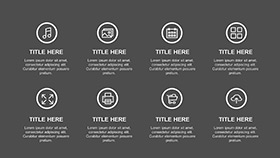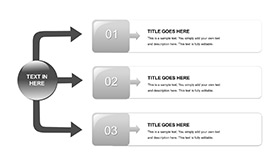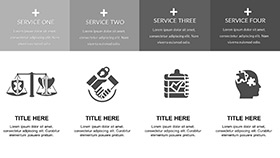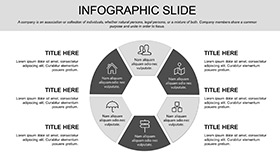Imagine walking into a boardroom or classroom where your slides don't just inform - they tantalize the senses, drawing your audience into the world of flavors and techniques like a well-seasoned dish. That's the magic of the Food Products Keynote Template, crafted specifically for chefs, restaurateurs, educators, and food enthusiasts who need to convey passion for culinary arts without starting from scratch. This versatile Keynote theme packs 28 meticulously designed diagrams, three master layouts, and three background options, all ready to adapt to your narrative. Whether you're pitching a new menu to investors or leading a workshop on sustainable sourcing, these slides turn complex ideas into digestible, visually appealing stories. Compatible with Keynote on macOS and iOS, it ensures your content shines on any screen, from iPads in the kitchen to projectors in conference halls. Dive in and discover how easy it is to blend creativity with clarity, saving hours on design so you can focus on what you do best: inspiring through food.
Core Features That Sizzle
At the heart of this template lies a suite of tools built to elevate your presentations beyond basic bullet points. Start with the three master slides, each offering a distinct foundation - clean and minimal for recipe breakdowns, vibrant and illustrative for ingredient spotlights, or structured and grid-based for menu planning. Layer on the three backgrounds: a subtle linen texture evoking rustic farm tables, a sleek metallic sheen for modern bistros, or a warm wood grain that nods to traditional cooking hearths. These aren't just aesthetics; they're functional backdrops that enhance readability while immersing viewers in a culinary atmosphere.
The real stars are the 28 diagrams, ranging from circular process flows for step-by-step baking instructions to horizontal timelines tracing the evolution of a dish from farm to fork. Each one is vector-based, meaning you can resize without losing quality, and fully editable in Keynote's intuitive interface. Swap out placeholder icons - like whisks, herbs, or steaming pots - for your own photos or sketches with a simple drag-and-drop. And with seven color schemes inspired by global cuisines - from earthy terracottas for Mediterranean fare to cool blues for seafood specials - you can match your brand's palette effortlessly. Think of it as a customizable spice rack for your slides, ensuring every element harmonizes.
Customization Tips for Peak Flavor
- Layer Smartly: Begin by selecting a master slide that aligns with your section - use the grid for inventory lists, then overlay a timeline diagram to show production schedules.
- Icon Integration: Keynote's built-in shapes complement the included culinary icons; duplicate and recolor them to represent allergens or dietary notes without cluttering the layout.
- Animation Essentials: Apply subtle builds to reveal ingredients sequentially, mimicking a recipe unfold, keeping your audience hooked without overwhelming transitions.
These features aren't gimmicks; they're practical enhancers. A catering coordinator, for instance, might use the process diagrams to map event workflows, ensuring clients see the seamless execution behind the scenes.
Real-World Applications in the Kitchen
This template shines brightest when applied to scenarios where storytelling meets strategy. For restaurateurs launching a seasonal menu, the circular diagrams become perfect vessels for highlighting sourcing journeys - trace avocados from orchard to plate, emphasizing local partnerships that resonate with eco-conscious diners. In educational settings, like a community college's culinary program, instructors can leverage the timeline layouts to break down fermentation processes, making abstract concepts tangible and engaging for students.
Consider a food blogger transitioning to consulting: the background options provide a professional polish to pitches for brand collaborations, while editable charts quantify taste test results or market trends. It's not just about looks; it's about persuasion. Pair a vibrant color scheme with high-contrast text for virtual webinars, where screen fatigue is real, and watch engagement soar as viewers lean in to explore your visuals.
Step-by-Step: Crafting a Recipe Presentation
1. Open and Orient: Launch Keynote, import the template, and choose the illustrative master for your intro slide. Add a hero image of your signature dish to set the tone.
2. Build the Flow: Insert a horizontal diagram for the recipe steps - label each segment with actions like "sauté" or "simmer," then hyperlink to detailed sub-slides for techniques.
3. Enhance with Data: Use a pie chart from the diagram library to show nutritional breakdowns, customizing segments to reflect fresh vs. processed ingredients.
4. Finalize and Flavor: Switch to a warm color scheme, add subtle shadows for depth, and rehearse with Keynote's presenter view to time your narrative perfectly.
This workflow turns a standard recipe share into an interactive experience, ideal for trade shows where you're competing for attention amid sizzling demos.
Why This Template Outshines Stock Options
Compared to vanilla Keynote themes, this one dives deeper into food-specific visuals, eliminating the need to hunt for mismatched icons or rebuild layouts from generic templates. No more wrestling with clunky alignments or uninspired placeholders - these slides are pre-optimized for culinary flow, letting you iterate faster. Professionals in the field, such as those preparing decks for food festivals, appreciate how the modular design supports scalability: start small for a single workshop, then expand for a full conference series.
Integration is seamless too. Export to PDF for print menus or share via iCloud for collaborative reviews with your team. It's designed with real users in mind, drawing from feedback loops similar to those in professional design circles, ensuring reliability across devices.
Unlock Your Culinary Story Today
Ready to plate your ideas with professional flair? This Food Products Keynote Template is your shortcut to compelling presentations that leave a lasting taste. Download it now for just $22 and start stirring up success.
Frequently Asked Questions
What software is required to use this template?It's fully compatible with Apple Keynote versions from 2016 onward, including the latest macOS and iOS releases.
Can I customize the colors to match my brand?Yes, with seven built-in schemes and full editability, you can tweak hues directly in Keynote's color picker for a perfect fit.
Are the diagrams resizable without quality loss?Absolutely - the vector format ensures crisp scaling, whether for large projections or small mobile views.
How many slides are included?The pack features 28 versatile diagrams, plus masters and backgrounds to build out your deck as needed.
Is this suitable for non-food presentations?While optimized for culinary topics, the clean structures adapt well to related fields like agriculture or hospitality.









